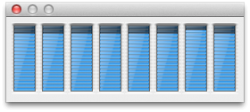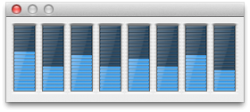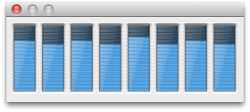I was on another forum asking about something, and someone said that if you see your CPU 'pegged', that means there's a bottleneck somewhere. I thought it'd be the opposite; if the CPU is going high, it means it's getting the resources fast enough that it can stay busy, and if it's going low, it isn't getting enough resources at once, am I correct? I'd have thought that the CPU going high would be 'full blast', full potential etc.
I'm using Premiere Pro CS6, and tested it with each render mode (CUDA using that hack). Here are screenshots of the CPU during each mode:
![dOCn4y3.png]()
Software Only - It doesn't move that much
![JeqVTKw.png]()
OpenCL - It fluctuates considerably
![24Rhkc4.png]()
CUDA - It fluctuates considerably
System specs are:
And the clips being rendered are straight from a Canon 650D with some (8%) noise added.
Also, out of the three render modes, which one do people suggest? CUDA seems to be the fastest for me, but I get the feeling that since my GPU doesn't have the minimum amount of VRAM required for Premiere Pro CUDA (1GB) that it may be 'fake', and might cause problems somewhere along the line. So far I haven't had a single problem though.
I'm using Premiere Pro CS6, and tested it with each render mode (CUDA using that hack). Here are screenshots of the CPU during each mode:

Software Only - It doesn't move that much

OpenCL - It fluctuates considerably

CUDA - It fluctuates considerably
System specs are:
- 21.5" 2012 iMac
- 3.1GHz i7
- 16GB RAM
- GeForce 650M 512MB
- Fusion Drive
- 4TB G-RAID via FireWire 800 via Thunderbolt port
- Mac OSX 10.8.3
- Premiere Pro 6.0.2
And the clips being rendered are straight from a Canon 650D with some (8%) noise added.
Also, out of the three render modes, which one do people suggest? CUDA seems to be the fastest for me, but I get the feeling that since my GPU doesn't have the minimum amount of VRAM required for Premiere Pro CUDA (1GB) that it may be 'fake', and might cause problems somewhere along the line. So far I haven't had a single problem though.




